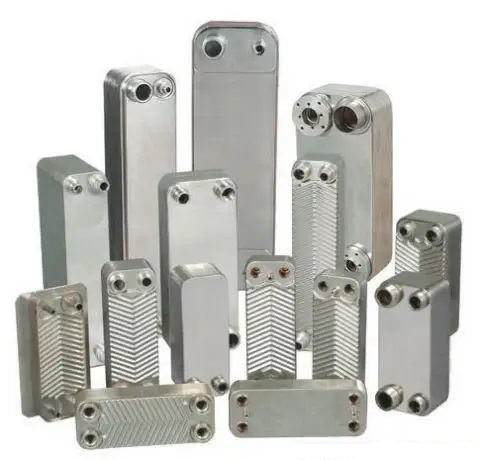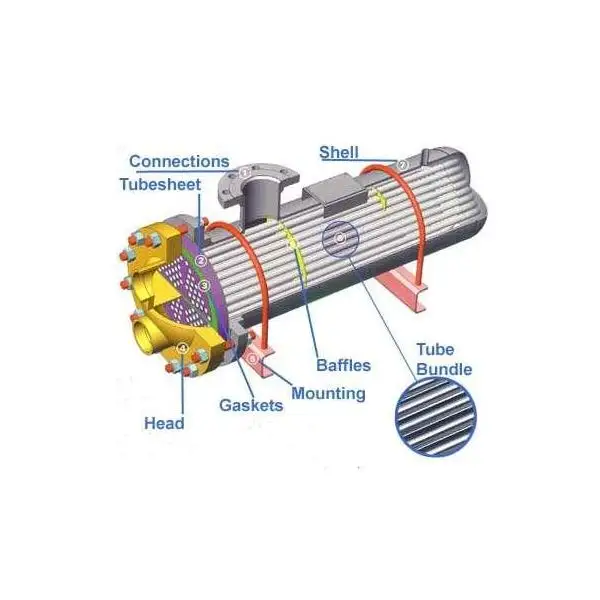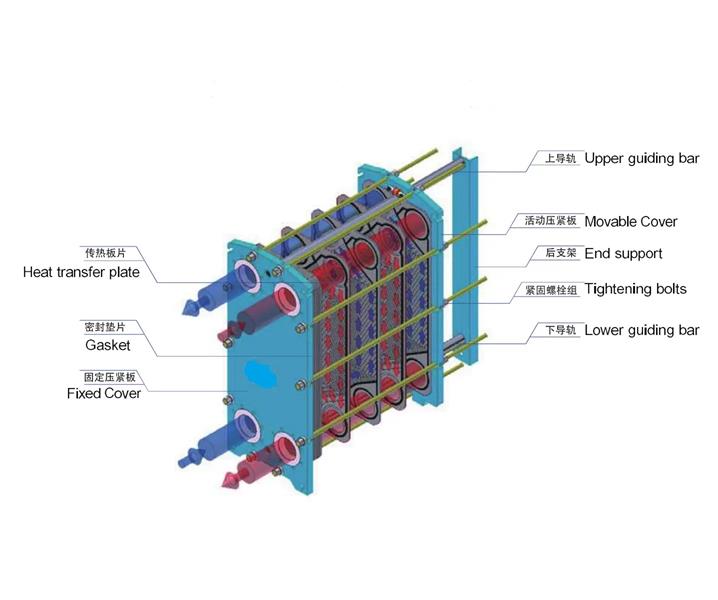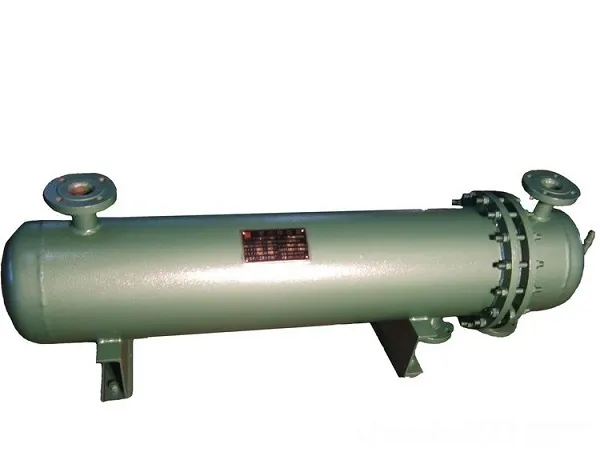
 English
English  Español
Español Português
Português русский
русский Français
Français 日本語
日本語 Deutsch
Deutsch tiếng Việt
tiếng Việt Italiano
Italiano Nederlands
Nederlands ภาษาไทย
ภาษาไทย Polski
Polski 한국어
한국어 Svenska
Svenska magyar
magyar Malay
Malay বাংলা ভাষার
বাংলা ভাষার Dansk
Dansk Suomi
Suomi हिन्दी
हिन्दी Pilipino
Pilipino Türkçe
Türkçe Gaeilge
Gaeilge العربية
العربية Indonesia
Indonesia Norsk
Norsk تمل
تمل český
český ελληνικά
ελληνικά український
український Javanese
Javanese فارسی
فارسی தமிழ்
தமிழ் తెలుగు
తెలుగు नेपाली
नेपाली Burmese
Burmese български
български ລາວ
ລາວ Latine
Latine Қазақша
Қазақша Euskal
Euskal Azərbaycan
Azərbaycan Slovenský jazyk
Slovenský jazyk Македонски
Македонски Lietuvos
Lietuvos Eesti Keel
Eesti Keel Română
Română Slovenski
Slovenski मराठी
मराठी Srpski језик
Srpski језик
Features of Plate Heat Exchanger
2022-07-09

It is well known that evaporator (heat exchanger) is one of the key components of either air cooled industrial chiller or water cooled industrial chiller. Based on the most popular circumstance of application, there are basically three options: copper coil, plate type and shell and tube type. Let’s take a look at the features of plate heat exchanger by comparison with shell and tube type.
1. High heat transfer coefficient
Due to the inversion of different corrugated plates to form a complex flow channel, the fluid flows in a rotating three-dimensional flow in the flow channel between the corrugated plates, which can generate turbulent flow at a low Reynolds number (generally Re=50~200), so the coefficient of heat transfer is high, generally considered to be 3 to 5 times that of the shell-and-tube type.
2. Large logarithmic average temperature difference, and small terminal temperature difference.
In the shell-and-tube heat exchanger, the two fluids flow in the tube side and the shell side respectively, which is generally a cross-flow flow, and the logarithmic average temperature difference correction coefficient is small, while the plate heat exchanger is mostly co-current or counter-current flow. , and its correction coefficient is usually around 0.95. In addition, the flow of cold and hot fluids in the plate heat exchanger is parallel to the heat exchange surface and there is no side flow, so the temperature difference at the end of the plate heat exchanger is small, and the heat exchange to water can be below 1°C, while shell and tube heat exchangers are generally 5°C.
3. Small footprint
The plate heat exchanger has a compact structure, and the heat exchange area per unit volume is 2 to 5 times that of the shell and tube type. Unlike the shell and tube type, it is not necessary to reserve the maintenance site for drawing out the tube bundle, so the same heat exchange can be achieved. The area of the heat exchanger is about 1/5~1/8 of that of the shell and tube heat exchanger.

4. Easy to change the heat exchange area or process combination
As long as a few plates are added or reduced, the purpose of increasing or reducing the heat exchange area can be achieved; by changing the arrangement of the plates or replacing a few plates, the required process combination can be achieved to adapt to the new heat exchange conditions, while It is almost impossible to increase the heat transfer area of the shell and tube heat exchanger.
5. Light weight
The individual plate thickness of the plate heat exchanger is only 0.4~0.8mm, while the thickness of the heat exchange tube of the shell and tube heat exchanger is 2.0~2.5mm. The shell of the shell and tube heat exchanger is much heavier than the frame of the plate heat exchanger. , The plate heat exchanger is generally only about 1/5 of the weight of the shell and tube type.
6. Low price
Using the same material and under the same heat exchange area, the price of the plate heat exchanger is about 40%~60% lower than that of the shell and tube type.
7. Easy to make
The heat transfer plate of the plate heat exchanger is processed by stamping, which has a high degree of standardization and can be mass-produced. The shell and tube heat exchanger is generally made by hand.
8. Easy to clean
As long as the pressing bolts are loosened, the frame plate heat exchanger can loosen the plate bundle and remove the plates for mechanical cleaning, which is very convenient for the heat exchange process that requires frequent cleaning of the equipment.

9. Small heat loss
In the plate heat exchanger, only the outer shell plate of the heat transfer plate is exposed to the atmosphere, so the heat dissipation loss is negligible, and no insulation measures are required. The shell and tube heat exchanger has a large heat loss and requires an insulating layer.
10. Smaller capacity
The capacity of plate exchanger is about 10%~20% of the shell and tube heat exchanger.
11. Large pressure loss per unit length
Due to the small gap between the heat transfer surfaces, the heat transfer surfaces have unevenness, so the pressure loss is larger than the traditional smooth tube.
12. Not easy to scale
Due to the sufficient turbulence inside, it is not easy to scale, and the scaling coefficient is only 1/3~1/10 of the shell and tube heat exchanger.
13. The working pressure should not be too large, leakage may occur
The plate heat exchanger is sealed with a gasket. Generally, the working pressure should not exceed 2.5MPa, and the temperature of the medium should be below 250℃, otherwise it may leak.
14. Easy to block
Since the channel between the plates is very narrow, generally only 2~5mm, when the heat exchange medium contains larger particles or fibrous substances, it is easy to block the channel between the plates.






